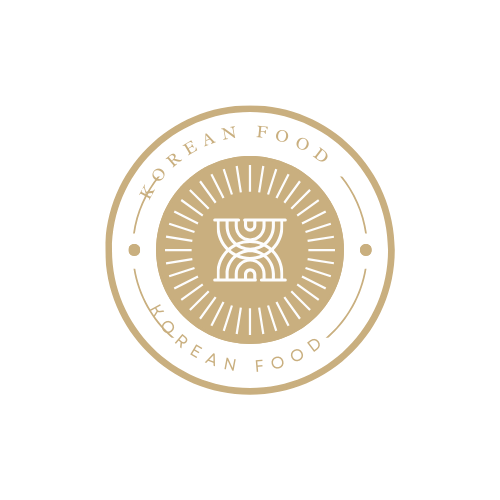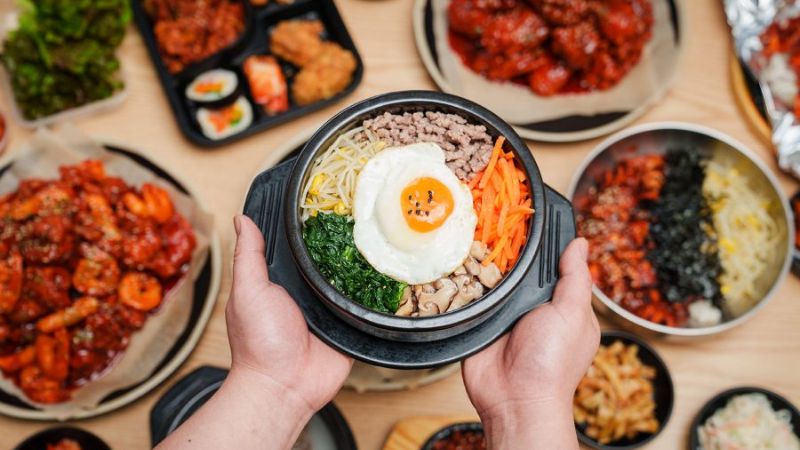Blog
Is Korean Food Fattening? A Comprehensive Look at Korean Cuisine
Korean cuisine has gained international popularity for its bold flavors, rich variety, and health benefits. But with so many tantalizing dishes like Korean BBQ, fried chicken, and indulgent side dishes, you may wonder: Is Korean food fattening? In this article, anoncoins.xyz explore the ingredients, cooking methods, and popular dishes in Korean cuisine to assess their impact on weight and overall health.
Understanding Korean Cuisine: Ingredients and Nutritional Profile
Traditional Korean food relies on whole, natural ingredients like vegetables, lean meats, seafood, rice, and fermented foods like kimchi. Common ingredients in Korean dishes are rich in nutrients and have a low-to-moderate caloric density, making them nutritious yet relatively low in calories. Here are a few staples:
- Vegetables: Korean meals often include a variety of vegetables like cabbage, spinach, radishes, and mushrooms, providing essential vitamins, minerals, and fiber that promote satiety and weight management.
- Rice: Rice is a staple in Korean meals, often consumed in moderation. White rice is most common, though brown rice and mixed-grain rice are also popular. Rice can be a significant source of calories, but portion control is key.
- Protein Sources: Lean proteins such as tofu, seafood, and lean cuts of beef and pork are commonly used in Korean cooking. Protein helps keep you full, aiding in weight control.
- Fermented Foods: Fermented foods like kimchi and doenjang (fermented soybean paste) are rich in probiotics, which benefit gut health and may aid in weight management.
- Healthy Fats: Korean cuisine uses oils sparingly, focusing on sesame oil and occasionally vegetable oil. These fats add flavor without excessive calories if used in moderation.
Is Korean Food High in Calories?
Not all Korean foods are low in calories. Traditional dishes vary widely, and some may be calorically dense due to added sugar, refined carbs, or oils. However, Korean meals are generally balanced and consist of multiple small servings of vegetables, lean proteins, and low-fat side dishes, which help keep the overall calorie count moderate.
To better understand if Korean food is fattening, let’s look at popular dishes and analyze their potential impact on weight.
Kimchi
Kimchi is a staple side dish made from fermented cabbage, radishes, and chili pepper. It’s low in calories (about 15 calories per serving) and high in fiber and probiotics, promoting digestive health and fullness. Kimchi is not fattening and can be a weight-friendly addition to meals.
Bibimbap
Bibimbap is a rice bowl topped with various vegetables, a fried egg, and lean meat, often served with a small amount of gochujang (a spicy-sweet chili paste). Bibimbap’s calorie content can vary based on ingredients, typically ranging from 400 to 600 calories. By choosing less oil and leaner meats, bibimbap can be a filling yet moderate-calorie meal.
Korean BBQ (Galbi, Bulgogi)
Korean BBQ is a popular choice but can be high in calories due to marinated meats and oil used in grilling. Galbi (beef short ribs) and bulgogi (marinated beef) can contain added sugar and oils, increasing their calorie content. Limiting portion sizes, choosing leaner cuts, and enjoying with side vegetables can make Korean BBQ more weight-friendly.
Japchae (Stir-Fried Glass Noodles)
Japchae is made with sweet potato noodles, vegetables, and sometimes meat, stir-fried with sesame oil and soy sauce. A standard serving has around 400-500 calories, primarily from noodles and oil. While japchae is flavorful, portion control is key to keeping it from being fattening.
Kimbap
Kimbap is a Korean-style sushi roll filled with vegetables, rice, and sometimes protein like fish or beef. One roll is usually around 350-500 calories. While kimbap contains nutritious ingredients, rice makes up a significant portion, so it’s best enjoyed in moderation.
Tteokbokki (Spicy Rice Cakes)
Tteokbokki, or spicy rice cakes, is a popular Korean street food known for its chewy texture and spicy sauce. Rice cakes are high in carbs, and the sauce often contains sugar, making this dish calorically dense. Tteokbokki is best enjoyed occasionally if you’re watching your calorie intake.
Korean Fried Chicken
Korean fried chicken is famous for its crispy coating and flavorful sauces. The frying process and sugar-laden sauces make it high in calories and fat. For those concerned with weight, fried chicken should be enjoyed sparingly, as it can easily contribute to weight gain.
Samgyetang (Ginseng Chicken Soup)
Samgyetang is a nutritious soup made with a whole chicken, ginseng, and rice. While high in protein and relatively low in calories per serving, this dish can be filling and beneficial for weight management, as it lacks the heavy oils and sugars found in other dishes.
Soondubu Jjigae (Soft Tofu Stew)
Soondubu jjigae is a hot, spicy stew made with soft tofu, vegetables, and sometimes seafood or meat. This low-calorie dish is often enjoyed with rice. It’s nutrient-dense and satisfying, making it an excellent option for weight management.
Cooking Methods and Their Impact on Caloric Density
The way Korean food is prepared can significantly affect its caloric content. Here’s a closer look at the common cooking methods in Korean cuisine and how they impact the calorie count.
- Grilling and Roasting: Grilling meats and vegetables, as done in Korean BBQ, adds flavor without much fat. Marinating and grilling lean meats can be a healthy option if you control portion sizes.
- Fermenting: Fermentation, as seen in kimchi and doenjang, doesn’t add calories and even boosts health benefits by promoting gut health and reducing inflammation, which can support weight management.
- Stewing and Boiling: Many Korean soups and stews are made by boiling or simmering ingredients, which keeps the calorie count low. Clear broths and vegetable-based stews like kimchi jjigae (kimchi stew) and doenjang jjigae (soybean paste stew) are generally low in calories.
- Stir-Frying: While stir-frying is common, it’s often done with minimal oil. Japchae and bokkeumbap (fried rice) are examples of stir-fried dishes that can be calorically dense but can be made lighter by using less oil and more vegetables.
- Frying: Fried foods like Korean fried chicken are high in fat and calories, especially when served with sugary sauces. While delicious, these dishes are best eaten occasionally if weight control is a priority.
How to Enjoy Korean Food in a Healthy Way
If you’re concerned about calorie intake, here are a few tips to make your Korean food experience healthier:
- Practice Portion Control: Korean meals are often served family-style, so it’s easy to overeat. Try smaller portions, especially with rice and higher-calorie dishes.
- Choose More Vegetables: Load up on vegetable-based side dishes, such as spinach (sigeumchi namul), bean sprouts (kongnamul), and cucumber salad (oi muchim) to fill up on low-calorie, high-fiber options.
- Opt for Lean Proteins: Choose lean meats or seafood instead of fatty cuts. Chicken breast, tofu, and seafood are lighter options that are still high in protein.
- Limit Fried Foods: Fried items like Korean fried chicken are calorically dense. Opt for grilled or steamed dishes instead, or enjoy fried foods as an occasional treat.
- Moderate the Rice: Rice can be a major calorie contributor in Korean meals. Limit your intake, or choose mixed grains or brown rice for added fiber and nutrients.
- Watch the Sauces: Some Korean sauces, such as gochujang, can contain added sugars and salt. Use them in moderation, or make lighter versions at home.
Health Benefits of Korean Cuisine
Korean food is rich in nutrients and has several health benefits that can actually support weight management:
- Probiotic-Rich Foods: Kimchi and other fermented foods contain probiotics, which aid in digestion and promote gut health.
- Antioxidant-Packed Ingredients: Korean dishes often use garlic, ginger, and chili peppers, all rich in antioxidants that fight inflammation.
- Fiber-Rich Meals: The high vegetable content in Korean meals means they’re naturally high in fiber, helping you feel full longer and aiding in digestion.
Conclusion: Is Korean Food Fattening?
While some Korean dishes can be high in calories and fat, especially when fried or made with sugary sauces, the majority of Korean cuisine is balanced, nutrient-dense, and can support a healthy diet. Traditional Korean meals emphasize vegetables, lean proteins, and fermented foods, making them suitable for weight management when enjoyed mindfully.
By choosing wisely and moderating high-calorie options, Korean food can fit comfortably into a balanced diet without being fattening. Embrace the flavors and variety of Korean cuisine, and enjoy the health benefits it offers with confidence.

